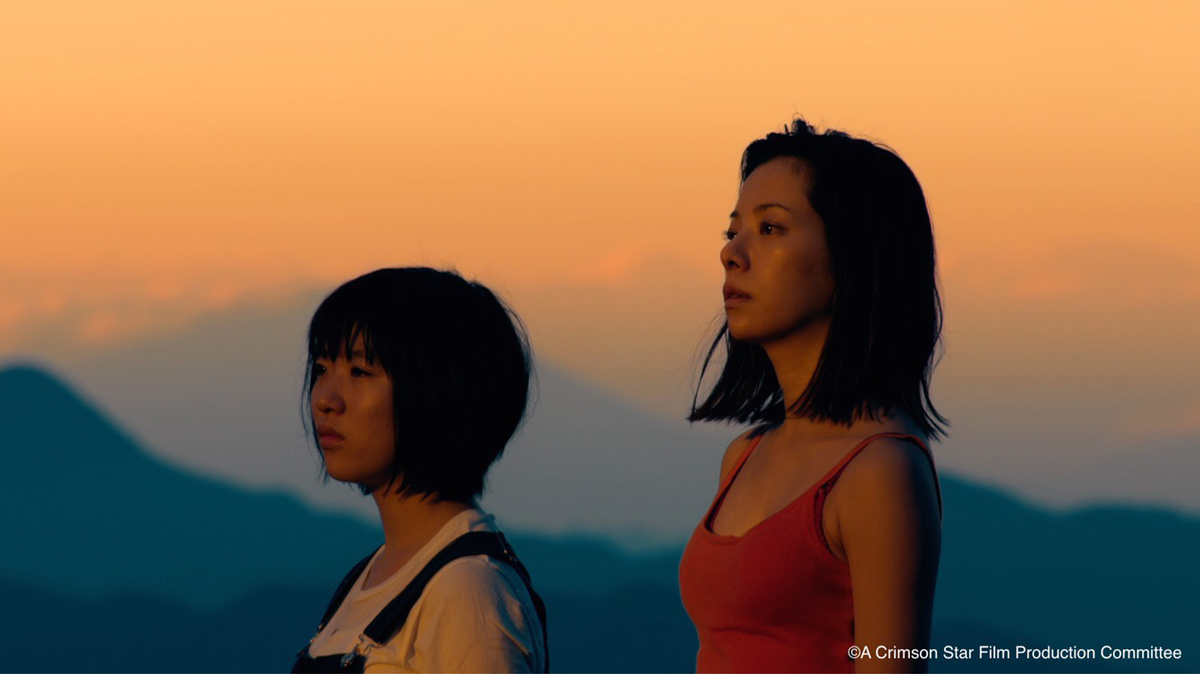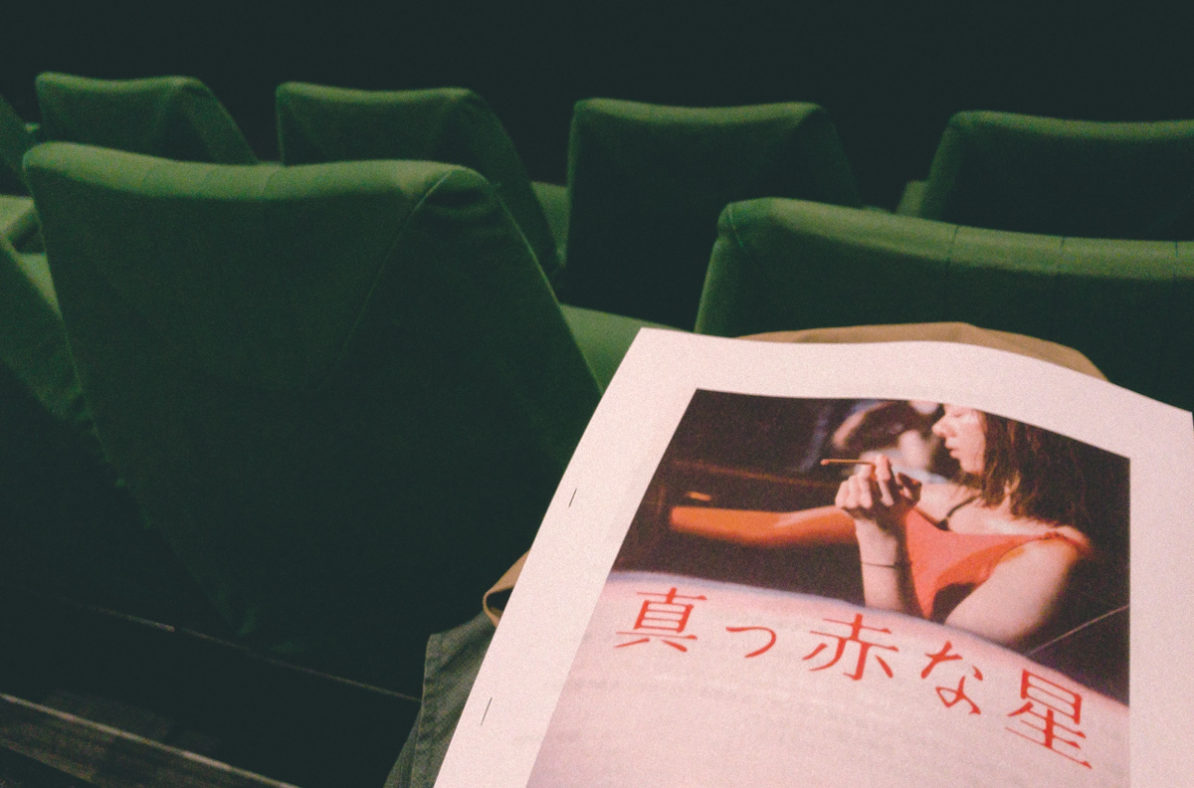Attending press screenings at the Kinohaus screening room located in the basement level of the Eurospace Theater can sometimes prove tricky. Due to some misjudgement on my part, I arrived at Shibuya station with less than 10 minutes before the screening began. I attempted to take a short cut, but as anyone who has been to Shibuya knows, the backstreets around the vicinity of the Eurospace Theater are complicated to say the least. My “short cut” ended up taking me farther away from the theater. Thanks to the GPS and map available on my smartphone, I arrived with barely a minute or two to spare. Normally I would take stock of those in attendance, but this time I could only manage to find a seat and get settled before a young woman associated with the movie walked to the front of the room in order to briefly thank those attendance for coming to the screening. She then introduced director, Igashi Aya, who seemed understandably nervous at this first screening of her latest endeavor outside the movie’s inner circle. After a few words from Igashi, the lights dimmed.

The Movie
A Crimson Star opens with a red paraglider emerging from behind a lush, green mountain ridge to drift out against a deep blue sky. It is a key image on the promotional materials and an important symbol thematically. At its core, the movie is about longing. Komatsu Miku’s teenage Yo, and Sakurai Yuki’s Yayoi are two women (people) in search of a loving individual which for all intents and purposes should have been inherent in their lives. But the reality they have faced has been quite the opposite. They are both damaged individuals who find in one another the unconditional care they’ve been longing, but it is a relationship ultimately limited by societal bounds. As the movie unfolds, deeper wounds or new hurts are revealed creating an even deeper loneliness and a yearning for one another’s company, but neither can truly be what the other needs despite all efforts. The red paraglider mentioned earlier symbolizes their liberation from a life of being lonely. Flight is the freedom to soar beyond their boundaries. The palpable melancholy one feels throughout the movie is primarily due to their own realization of their earthly bounds. What becomes obvious is the relationship between them will forever exist in a limbo between reciprocated feelings and unrequited love.

I wrote in my sight unseen write up this movie could potentially render a story that transcends conventional notions of heterosexual and/or romantic love. Upon viewing, however, I now understand it supersedes even these and what some may superficially see as LGBTQ themes, delivering instead a representation of the four types of love found in Greek language: Storge (familial love), Phileo (fellowship or friendship love), Eros (romantic love), and Agape (unconditional love). Whether intended by Igashi or not, Yo and Yayoi’s relationship touches on each of these as the movie develops. I will be interested to see how the ending will be interpreted by foreign audiences. It is both hopeful yet heartbreaking and leaves great potential for discussion.
The Production
Only in her early 20s, Igashi tackles emotional depths and complicated themes with an understanding belying her age. She has been able to render a sincerity in her characters and an honesty through her story which have often tripped up experienced filmmakers. This is also due in no small part to the presence of her two capable actresses. 15-year-old Komatsu Miku must portray emotions and situations one would think is not even in the mindset of someone so young, but Komatsu handily portrays Yo’s complex emotional layers and desires without being “cinematic,” imparting a tangible sincerity to her quest for compansionship and love. Complementing Komatsu is Sakurai Yuki’s portrayal of Yayoi. Necessarily providing the movie its “sexuality,” Sakurai also never loses sight of who Yayoi is as a woman. She imbues a subtlety and depth to her sadness camouflaged with a practiced air of strength. There is one scene where Yayoi tries and fails to fight back tears but does not want to let it show. Igashi’s framing of the scene and Sakurai’s delivery of Yayoi’s heartache breaking through her emotional dam still resonates with me a days later. Sakurai seems so perfect for the role it is hard to believe she was one of 300 who auditioned for the part. She and Komatsu’s commitment to the project from very early on is evident despite the difficult production.
Scheduled for a 20 day shoot in August of 2017, heavy rains not seen in 40 years caused extensive delays and almost put the movie in serious danger of not being completed. This is amazing to reflect on now due to the picturesque beauty shown of the setting’s landscapes and the deep blue skies integral to the paraglider shots. The ending scenes at the observatory were shot in November and were also the final shots of the production. With cast and crew having to persevere and overcome the hardships of the often push backed schedule, the timing of filming the movie’s finale lent additional emotional background to the actresses’ performances. Reportedly there wasn’t a dry eye on the set.
The Unexpected
As the lights came back on in the theater and people were gathering belongings before filing out of the exit, I happened to look to my right and noticed director Yukisada Isao sitting in the same row as I. He was there to watch Igashi’s movie as a film lover. By the time I emerged into the reception area outside the screening room, Igashi and other participants of A Crimson Star were eagerly gathered around Yukisada including star Sakurai Yuki. As stated previously, she has been commitmented to the movie and Igashi ever since becoming involved thus her presence on a non-official, personal capacity for moral support certainly confirmed this.
At this time I was surprised to hear my name being spoken by someone and was pleasantly greeted by associate producer Natsuhara Ken and producer Sugawara Mio. They thanked me for the Caught My Eye article I had written and we talked about the movie and its upcoming world premiere at the Raindance Film Festival in London. I was especially honored to meet Sugawara who is the same age as Igashi. The filmmaking partnership of two young women in their 20s is quite a rarity in the Japanese film industry. Personally being able to speak with her and sensing both the pride in the movie which has resulted as well as the anxiousness toward its reception only hammered home the importance of supporting these young filmmakers.
A Crimson Star amply demonstrates the attention Igashi received for her debut work, Tokeru by the likes of director Kawase Naomi and the Cannes Film Festival was well deserved. Igashi’s theatrical feature debut will open in Japan on December 1st, 2018 before moving on to theaters across the country.
